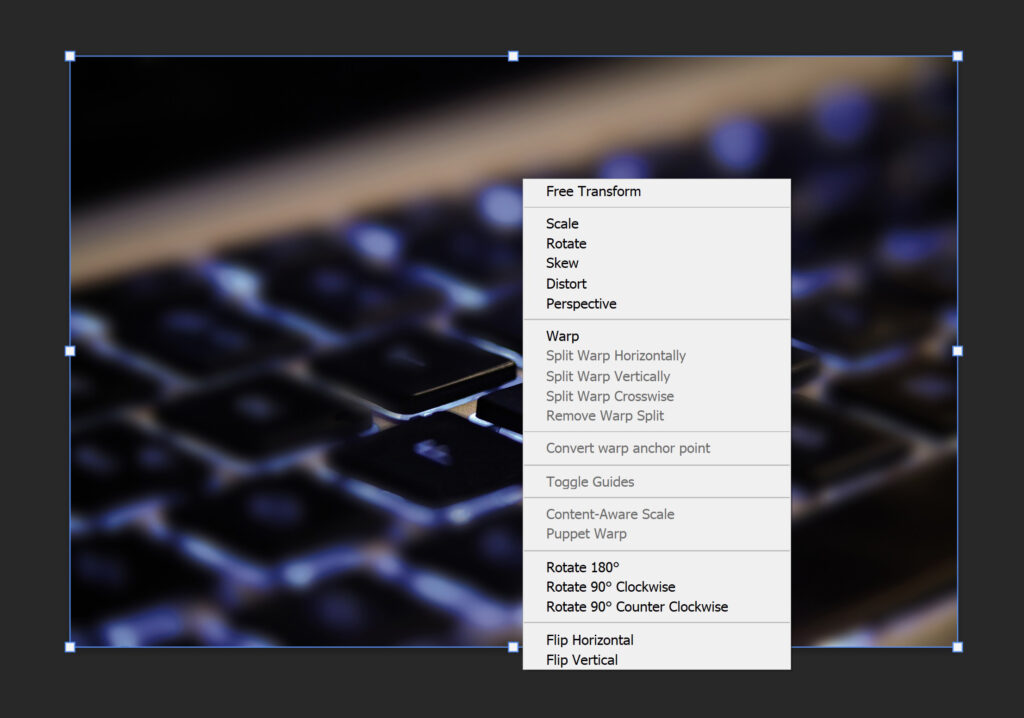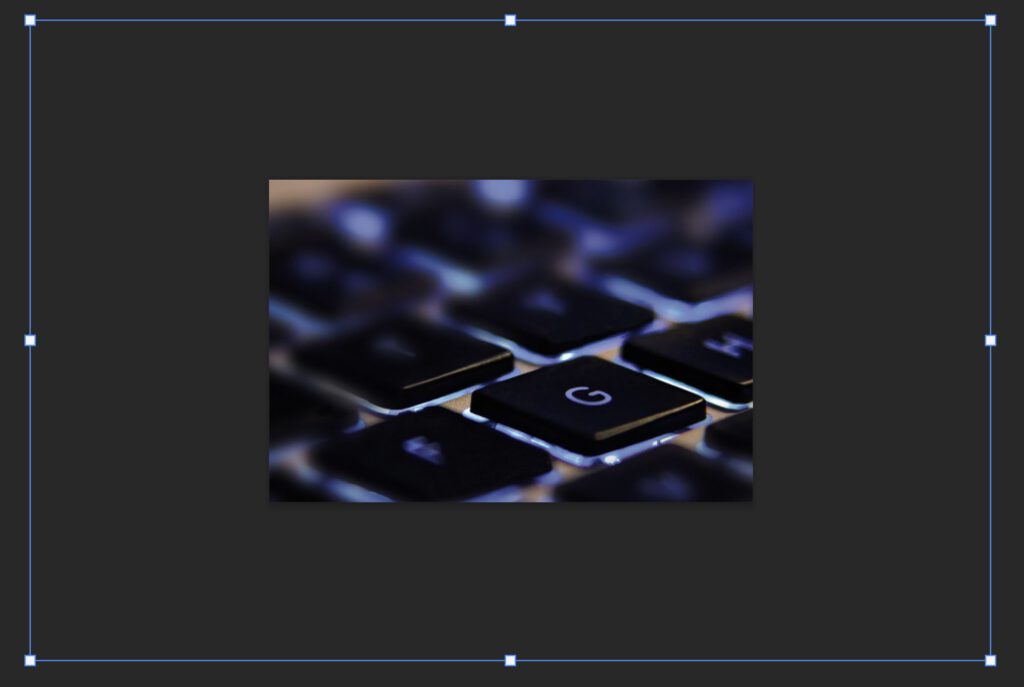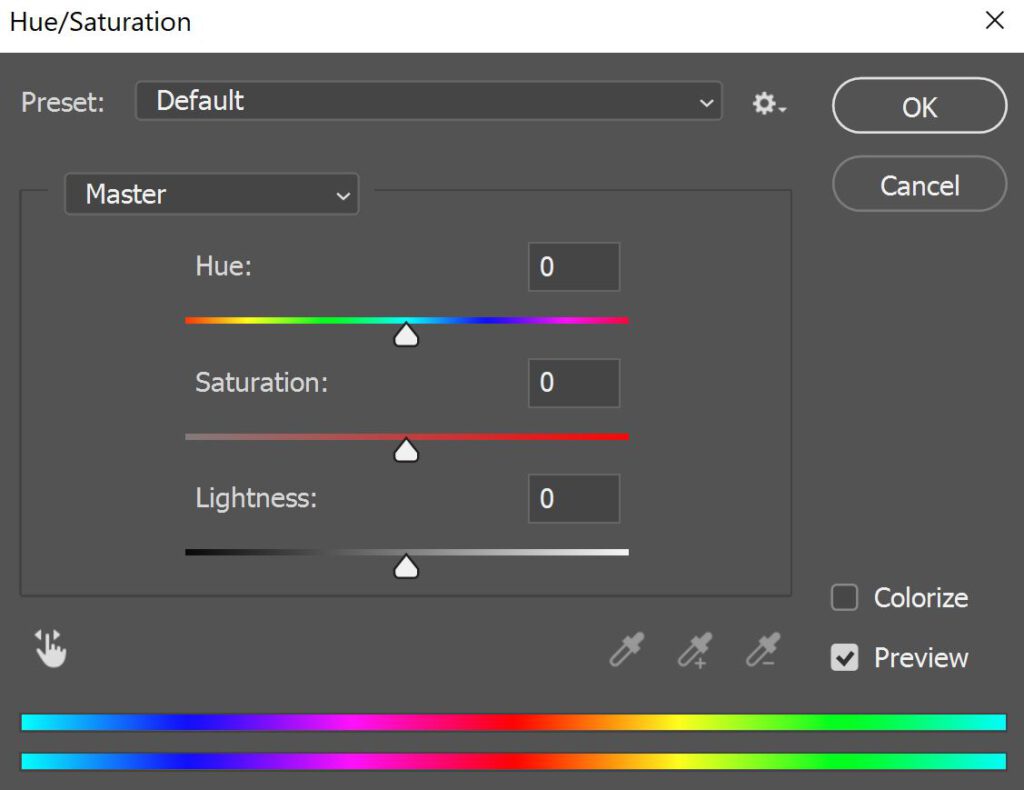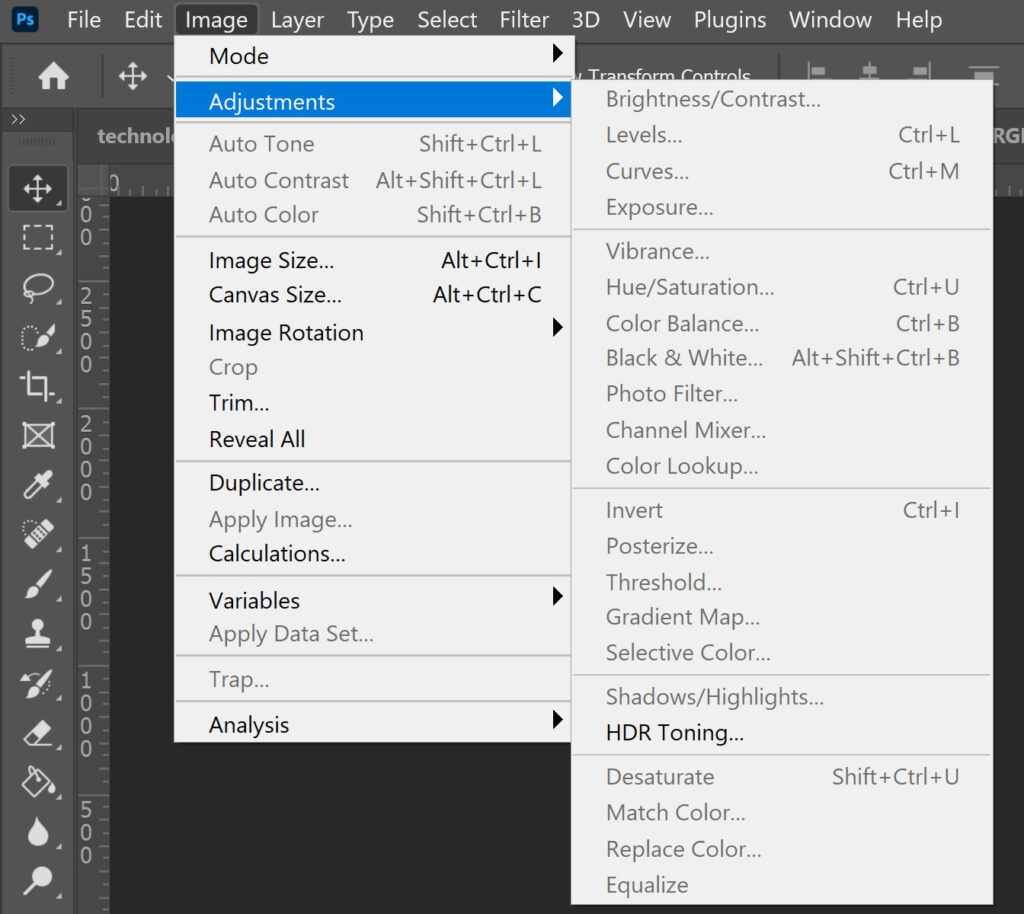Published on October 24, 2021
My favourite Photoshop shortcuts
When you incorporate shortcuts in your workflow, it might really speed things up. You might be using some shortcuts already, but in this blog I’ll share some of the shortcuts I use often in Adobe Photoshop.
1. CTRL+J
This is definitely the shortcut I use the most. Pressing CTRL+J duplicates the layer you’ve selected. I like to keep my background layer untouched, so the first thing I do when I start with a new project is pressing CTRL+J to duplicate my background layer. It copies the layer and you can start working on that new layer.

2. CTRL+T
Pressing CTRL+T activates Free Transform. Select a layer that you want to transform, press CTRL+T and you’ll see a ‘box’ around your layer. I mostly use Free Transform to resize a layer, which you do by dragging the handles or outlines of the box. Apart from resizing, you can use Free Transform for many more things. For example: you can rotate your layer, or you can right click inside the box to show several more options.

3. CTRL+0
This shortcut is something I often use in combination with Free Transform. If your layer is bigger than your file, it might not show the box I talked about earlier when you press CTRL+T. Press CTRL+0 (zero) to make the layer fit your window. If the layer is too big, it’ll zoom out to the point where your Free Transform box is visible. It doesn’t just work with Free Transform, you can also use it to make your layer fit your window (so it fills up the entire window). Apart from this, you can use CTRL++ and CTRL+- to zoom in or out.

4. CTRL+G
Select multiple layers and press CTRL+G to group them. This is a good way to keep everything clear when you’re working with a lot of layers. Double click on the group name to adjust the name of that group, so you know which layers are in that group.
5. D and X
Pressing D changes the colors back to the default foreground/background colors. The default foreground color is black and the default background color is white. So if you’re working with different colors and you need to go back to black, pressing D will do that. Press X to switch the foreground and background colors. If the foreground color was black and the background color was white, pressing X will make white the foreground color and black the background color. You can also use the X key when you’re working with different colors if you need to switch between these two colors often.

6. SHIFT+CTRL+U
Pressing SHIFT+CTRL+U will desaturate your selected layer (turn it black&white). I often use this shortcut when I need my layer to be black&white, without it having to look good in terms of exposure, highlights/shadows, contrast, etc. You can also press CTRL+U to open the hue/saturation panel. This gives you some more editing options.

7. [ and ]
If you’re working with a brush, you can use these keys to decrease and increase the brush size. You can also adjust the brush hardness by pressing { and } (hold shift while pressing [ or ]).
8. ALT
I spoke about duplicating the background layer to leave the original background layer untouched in point 1. If you do that, here’s a little trick to switch between the original image and your newly edited image. If you hold ALT while clicking on the eye icon next to your background layer, it makes all the other layers invisible. So it shows your original image. If you hold ALT and click the eye icon again, the other layers will become visible again. This way you can quickly see the before and after image.

You can also use keyboard shortcuts to activate the tools in your toolbar. Hover over the tool, a little window will appear next to it. You’ll see which letter activates this tool (see image below). If you’re using certain tools often, it might be worth checking out which shortcut belongs to that tool.

More shortcuts
These were some of my favourite shortcuts, but there are many more. If you want to know what other shortcuts you can use, they’re all displayed in the menu (see image below).

If you want to know more about editing in Adobe Photoshop, check out my other blogs or take a look at my YouTube channel.
Photoshop
Basics
Photo editing
Creative editing
Camera Raw
Neural filters
Text effects

